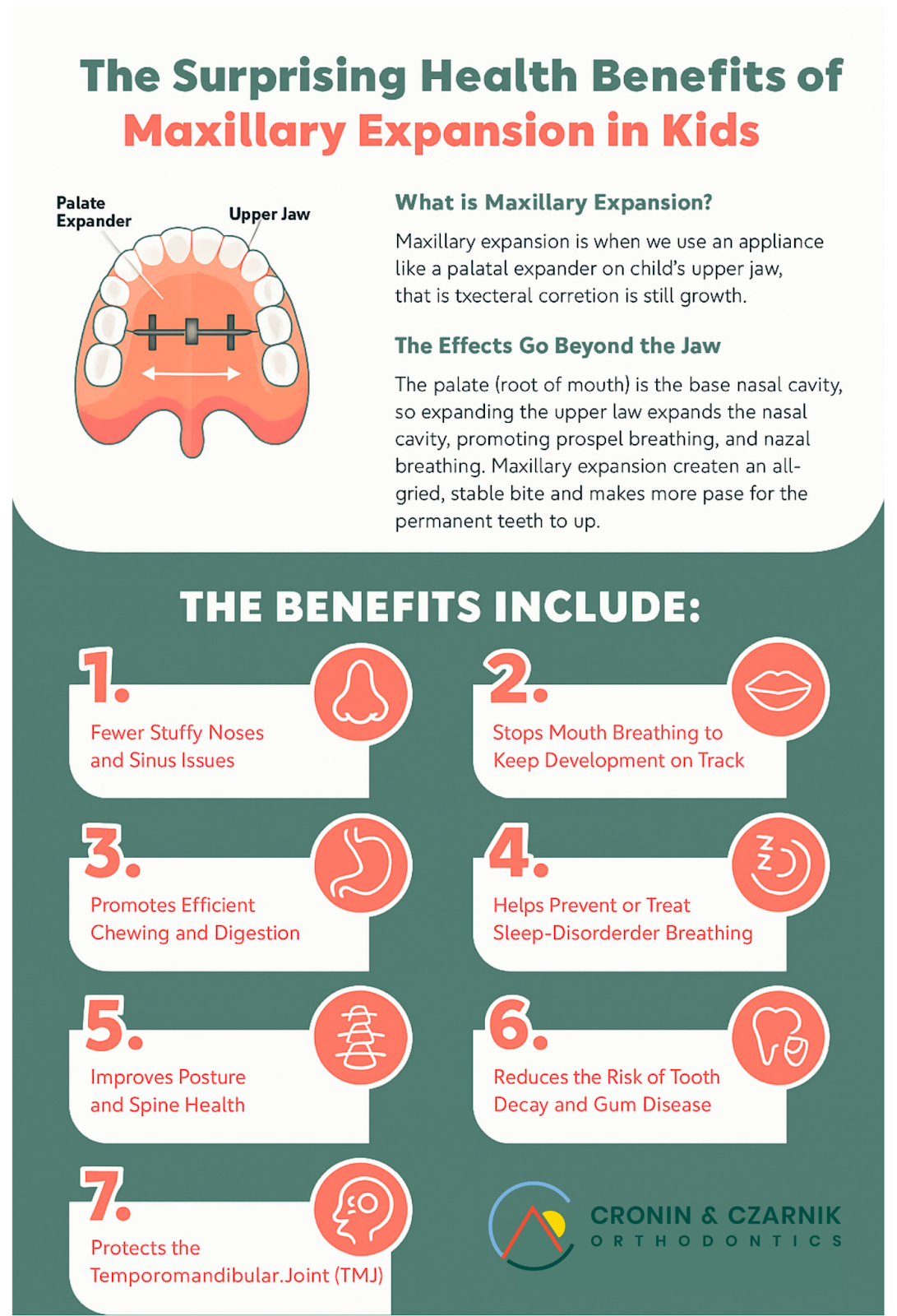At Cronin & Czarnik Orthodontics, we understand that orthodontics is about more than just creating beautiful smiles—it’s also about improving health and function. One area of growing interest in both clinical practice and academic research is how orthodontic treatment, particularly palatal expansion and other airway-conscious interventions, can improve airflow through the upper airway.
The Relationship Between Orthodontics and the Airway
The upper airway—including the nasal cavity, nasopharynx, and oropharynx—plays a vital role in breathing, especially during sleep. Narrow arches, constricted palates, and misaligned jaws can all contribute to reduced airway volume, which may be linked to breathing difficulties, mouth breathing, snoring, and in some cases, sleep-disordered breathing or obstructive sleep apnea (OSA).
Orthodontic treatments aimed at expanding the palate and properly aligning the jaws have been shown to enhance upper airway dimensions and improve airflow. This effect is observed not only in children and adolescents, whose bones are still growing, but also in adults through more advanced treatment modalities.
What the Research Shows
In Children and Adolescents
Palatal expansion in younger patients is particularly effective because their midpalatal suture has not yet fused, making expansion easier and more stable. Several studies have demonstrated that Rapid Maxillary Expansion (RME) increases nasal cavity width and volume, which in turn reduces nasal airway resistance.
- A 2016 systematic review published in the American Journal of Orthodontics and Dentofacial Orthopedics concluded that RME significantly increases nasal cavity volume and improves nasal airflow in children.
- Another study in the European Journal of Orthodontics (2017) used cone-beam computed tomography (CBCT) to show a measurable increase in oropharyngeal airway volume after expansion in growing patients.

In Adults
Even in adulthood, expansion procedures such as surgically assisted rapid palatal expansion (SARPE) or mini-implant assisted rapid palatal expansion (MARPE) have shown positive results for airway improvement.
- A 2020 study in the Journal of Oral and Maxillofacial Surgery found that MARPE in adults resulted in a significant increase in nasal cavity volume and a reduction in airway resistance.
- Similarly, CBCT studies show that post-orthodontic treatment involving jaw repositioning or expansion often leads to wider airway passages and better airflow, contributing to better sleep quality and daytime alertness.
Long-Term Benefits
Orthodontic interventions that enhance airway dimensions not only relieve symptoms of sleep-disordered breathing but may also prevent long-term complications such as altered facial development, chronic mouth breathing, and increased risk for OSA. Improved breathing patterns can enhance concentration, energy levels, and overall health in both children and adults.
Why Choose a Specialist Trained in Airway and Growth?
Not all orthodontic treatment plans are designed with airway health in mind. That’s why it’s essential to work with an orthodontist who is specially trained in the relationships between airway, facial growth, and dental development.
At Cronin & Czarnik Orthodontics, Dr. Scott Czarnik and Dr. Carolyn Cronin are not only experts in tooth movement—they are also skilled in identifying underlying airway concerns and incorporating this knowledge into comprehensive, personalized treatment plans. Their approach ensures that each patient receives care that supports both a healthy smile and a healthy airway.
Final Thoughts
Orthodontic treatment can do much more than straighten teeth—it can significantly improve breathing and overall health by expanding the airway. Whether you’re considering orthodontics for yourself or your child, it’s important to speak with a team that understands the intricate relationship between the airway, growth, and facial development.
Contact Cronin & Czarnik Orthodontics today to schedule a consultation and discover how airway-focused orthodontics can transform your health—and your smile.
Sources:
- Lagravère MO, et al. (2016). “The effects of rapid maxillary expansion on nasal airway dimensions: A systematic review.” AJO-DO.
- Fastuca R, et al. (2017). “Changes in pharyngeal airway dimensions after rapid maxillary expansion: A cone-beam computed tomography study.” EJO.
- Zhao Y, et al. (2020). “Airway changes following mini-implant-assisted rapid palatal expansion in adults.” JOMS.

